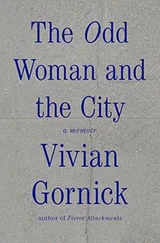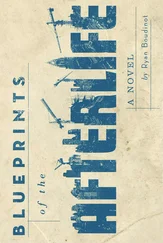After the nights came the mornings. My sister and I got out of our beds, put on clothes, and marched from the house to the corner where the school bus stopped. In this we took our mother’s lead, our mother who lit a morning cigarette, swallowed her coffee, and, without memory of herself in her darker form, went to the office. In those days, the early seventies, her work at the college did not figure much in our family’s daily life. It was not something that we talked about. It was never celebrated. She was alone in her work, and she was alone at home, and her isolation — from her family and from the world — informed her use of fashion and design to tell her life story.
But there is a problem. Fashion — and I refer not only to clothes, stylish or otherwise, and the ways they evolve and are worn, but to the meanings and associations that can be drawn from stylistic variations or the lack of variations in clothes — fashion, whether or not considered a high art form, remains explicitly a visual and tactile language, a language, as I have come to understand from reading the work of the art historian Anne Hollander, written in an alphabet of colors, shapes, textures, and forms that subtly shift and change from season to season, and from year to year, over the decades of our lifetimes. Fashion is a communal dialogue, a conversation that never stops — on the subjects of desire, power, kinship, sex, and the passing of time — between people living together in a society. What happens to the conversation, though, when the primary society known by a maker of clothes consists of a dying family — a family which, night after night, year after year, apologizes itself out of existence?
There was a week in the early nineties when my mother, driving her station wagon from Miami, and I, flying south from New York, met in Black Mountain, North Carolina, at the home of her parents. She’d brought with her a selection of her wearable creations, and she was eager to show them off. One night after dinner, she led me and my grandparents to the hallway closet. One by one, she pulled out the garments she’d been working on in her shop near the Miami River, the garments she thought of as works of art. Among them, I recall, was the kimono adorned with butterfly wings.
I watched the faces of her elderly, southern Presbyterian parents. My mother’s mother touched the fabrics and said, “Oh, look at this,” and “How about that.” And she appreciated, in a reserved though generous manner, her daughter’s workmanship with needle and thread. But what, exactly, had my mother made with needle and thread? This wasn’t clear to me or to my grandparents, who were, frankly, distraught. They didn’t know what to say to their daughter.
After a long moment, we retreated from the closet in the hallway. We went to the living room and sat. The television was tuned to the Tony Awards. My mother had always loved Broadway musicals. After a while, I looked away from the screen and saw, on my mother’s face and in her slumped posture, in the way she blew cigarette smoke forcibly from her mouth, her angry disappointment.
Had she pulled out hangers draped with clothing that showed either an ironic exaggeration or a direct repudiation of contemporary fashion ideals — glamorously deglamorized dresses in the mid-nineties Comme des Garçons mode, for instance, or radical versions of men’s suits executed as statements to be worn by women — her parents might have been similarly perplexed and anxious. But I would have understood that she was making something that, however odd her choices might have appeared at first glance, could nevertheless be worn in the world in a way that communicated to the viewer, in a relatively direct manner, aspects of her desires and her attitudes about the body, about shape and form, about seduction and the politics of public life. I understand that a comparison between my mother’s clothes and European and American runway designs is not entirely fair. I also realize that her parents and her son were not the perfect audience for her fantastic productions.
She showed us her work. We fled. She risked our misunderstanding and disapprobation, our attempts at praise, our confusion and neglect. In this risk and its result — her suffering — she found proof of herself as an original and subversive artist.
Was it so? Was my mother ahead of her time, destined for acceptance by some future civilization, as she proclaimed more than once in the years leading up to her death?
The robe is titled “The Heroine’s Journey,” and yet it is neutral in relation to the wearer’s sexuality. It does not shape itself around the body, and it does not impose shape on the body. From a distance, it looks like a vestment worn by an Episcopal priest; though, with its tassels and wings, it is clearly more pagan than Protestant. It is a peaceable kingdom crowded with personal spirit guides and pets — birds, lion, horse, giraffe, cat — a menagerie of wild and tame hieroglyphs guiding the kimono’s wearer, the heroine, safely down the green road bordered with flowers and paved with magical coins. The robe takes on the life of all the lives emblazoned on or suspended from it, and it imparts this life to the person wearing it. But what manner of life is it? Neither earthbound nor confined within the mortal body, it is a life that is at once sacred and secular, shapeless and formal, youthful and aged, innocent and experienced, ancient and modern, fleeting and everlasting.
The year before she died, I met my mother in Philadelphia. It was the spring of 1999. Her father had been dead for four years, and her mother was soon to follow. Not long after her father’s passing, my mother had abandoned Miami and her air-conditioned shop beneath the expressway overpasses. She’d packed up her sewing machines, her tailor’s dummies, her buttons, her worktable, her fabrics and scissors, her pincushions and measuring tapes, and Merlin, her new cat — the white one had finally given up the ghost — and, using money left by my grandfather, she’d purchased a little one-story house at the bottom of a road in Black Mountain. Now, three years later, she’d driven north to attend the art school graduation of F., a friend from the Florida years who had left Miami to study painting in Philadelphia. At the ceremony, F. and my mother met a gallery owner who worked in the Old City district. This person expressed interest in my mother’s clothes, and my mother formed the impression that the gallery would give her a show.
One Saturday morning in May, I got on a train to Philadelphia. F. lived in a red brick house on a quiet Center City street. I took my time walking from the station. I had a bad feeling about the day ahead. My mother’s health had been rapidly declining in recent years, and in the past months she’d sounded, when I’d spoken with her on the phone, sicker and sicker. I was afraid of what I was going to see.
I wasn’t wrong to worry. When I saw my mother, I wanted nothing more than to lower my head, turn away, and walk steadily and without stopping back to the station.
Instead, she and F. and I went out to a cafe. I did my best to suppress my embarrassment at my mother’s loud speaking voice. It seemed to me that she was trumpeting and boasting. Were people staring? I recall that F. was wearing a jacket my mother had made, a short coat decorated with contrasting fabric pieces stitched in geometric patterns. F. wore the garment comfortably. If the embellished kimono represented couture, the jacket might have come from the Peace Goods sportswear line. I wondered, as I sat with my coffee, whether F. would continue wearing it once my mother got in her car and headed south.
We paid the check, got up from the table, and began our pilgrimage to the gallery where my mother hoped to be welcomed as a new artist. It was a long journey over a short distance. I watched my mother struggling to breathe; and I noticed her preparing to reach for the nearest fixed object, a lamppost or a parking meter that could steady her, if she suddenly needed it. Had she gained weight? Lost weight? What about the cough? Had her hacking grown worse? Why did her hair look so dead? Was she having trouble carrying her portfolio? And where had she got to all of a sudden?
Читать дальше












